ACCAHA运动试验指南简介
- 格式:ppt
- 大小:1.98 MB
- 文档页数:38
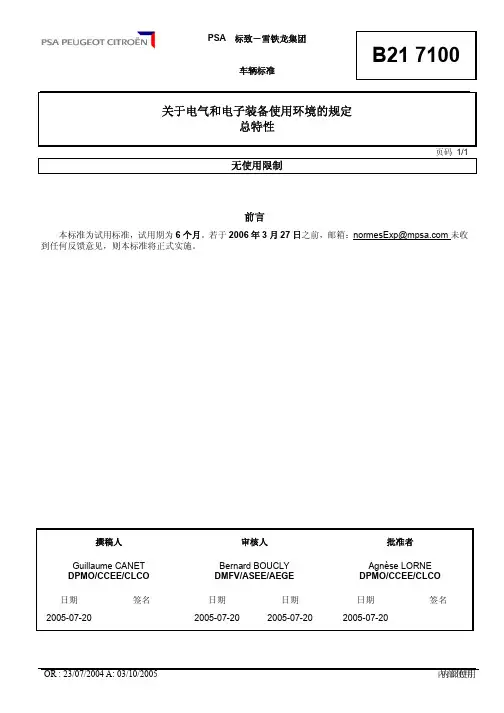
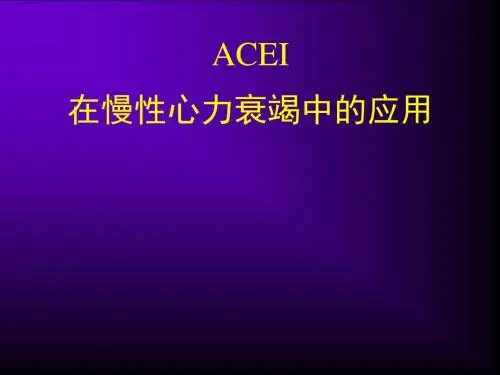
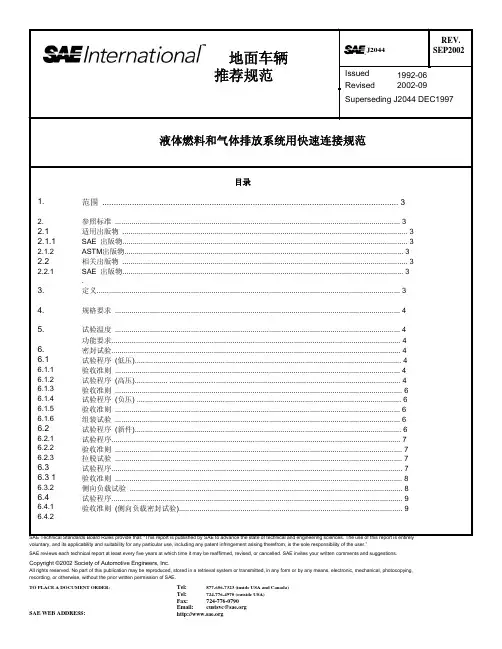
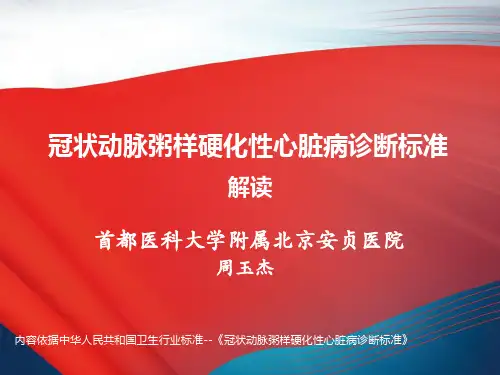
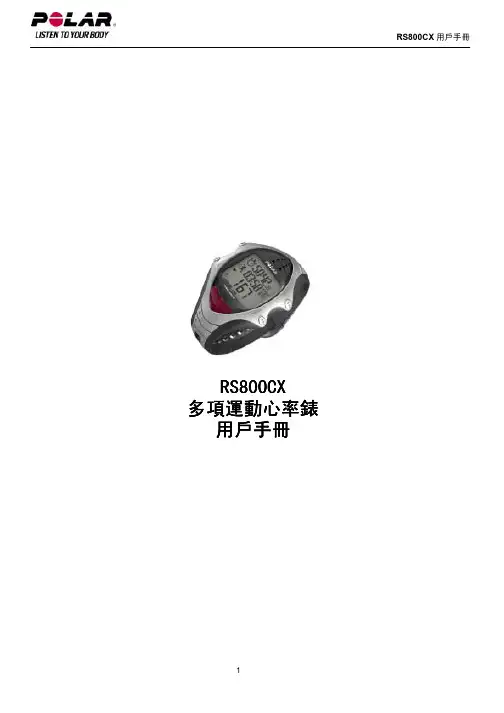

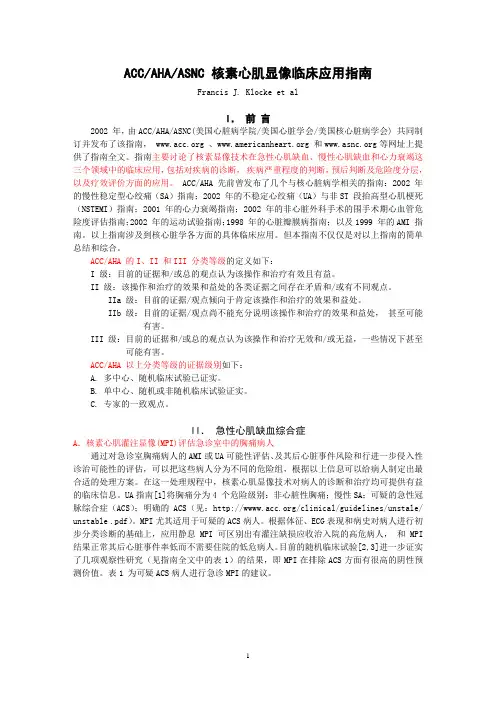
ACC/AHA/ASNC 核素心肌显像临床应用指南Francis J. Klocke et alI.前言2002 年,由ACC/AHA/ASNC(美国心脏病学院/美国心脏学会/美国核心脏病学会) 共同制订并发布了该指南, 、 和等网址上提供了指南全文。
指南主要讨论了核素显像技术在急性心肌缺血、慢性心肌缺血和心力衰竭这三个领域中的临床应用,包括对疾病的诊断,疾病严重程度的判断,预后判断及危险度分层,以及疗效评价方面的应用。
ACC/AHA 先前曾发布了几个与核心脏病学相关的指南:2002 年的慢性稳定型心绞痛(SA)指南;2002 年的不稳定心绞痛(UA)与非ST 段抬高型心肌梗死(NSTEMI)指南;2001 年的心力衰竭指南;2002 年的非心脏外科手术的围手术期心血管危险度评估指南;2002 年的运动试验指南;1998 年的心脏瓣膜病指南;以及1999 年的AMI 指南。
以上指南涉及到核心脏学各方面的具体临床应用。
但本指南不仅仅是对以上指南的简单总结和综合。
ACC/AHA 的I、II 和III 分类等级的定义如下:I 级:目前的证据和/或总的观点认为该操作和治疗有效且有益。
II 级:该操作和治疗的效果和益处的各类证据之间存在矛盾和/或有不同观点。
IIa 级:目前的证据/观点倾向于肯定该操作和治疗的效果和益处。
IIb 级:目前的证据/观点尚不能充分说明该操作和治疗的效果和益处,甚至可能有害。
III 级:目前的证据和/或总的观点认为该操作和治疗无效和/或无益,一些情况下甚至可能有害。
ACC/AHA 以上分类等级的证据级别如下:A. 多中心、随机临床试验已证实。
B. 单中心、随机或非随机临床试验证实。
C. 专家的一致观点。
II.急性心肌缺血综合症A.核素心肌灌注显像(MPI)评估急诊室中的胸痛病人通过对急诊室胸痛病人的AMI或UA可能性评估、及其后心脏事件风险和行进一步侵入性诊治可能性的评估,可以把这些病人分为不同的危险组,根据以上信息可以给病人制定出最合适的处理方案。
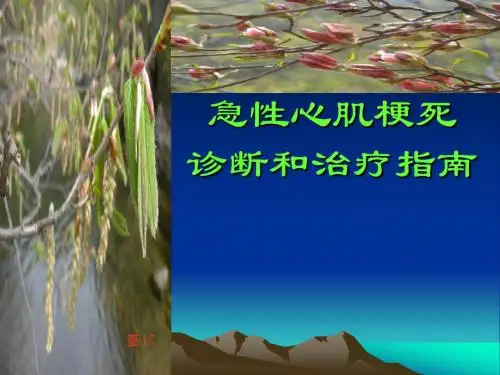
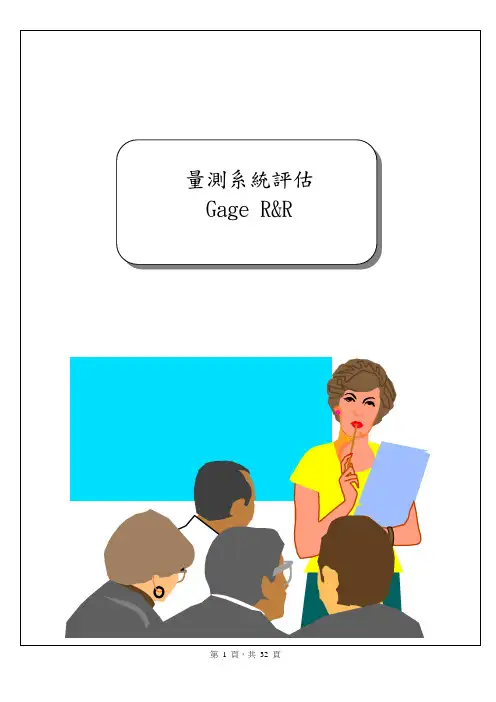
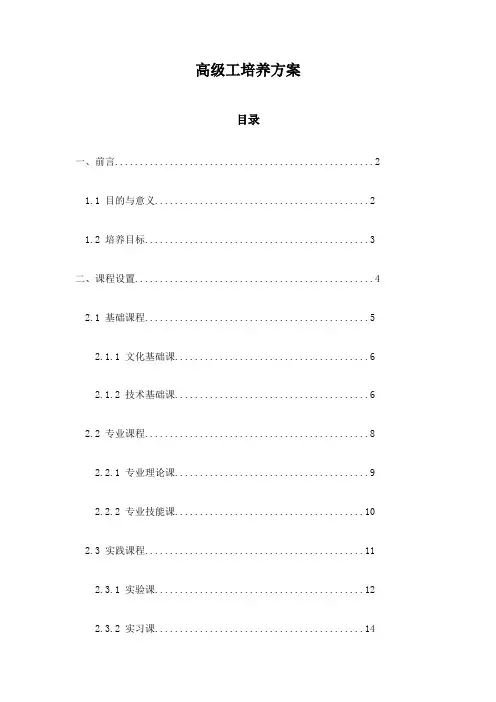
高级工培养方案目录一、前言 (2)1.1 目的与意义 (2)1.2 培养目标 (3)二、课程设置 (4)2.1 基础课程 (5)2.1.1 文化基础课 (6)2.1.2 技术基础课 (6)2.2 专业课程 (8)2.2.1 专业理论课 (9)2.2.2 专业技能课 (10)2.3 实践课程 (11)2.3.1 实验课 (12)2.3.2 实习课 (14)三、教学方法与手段 (15)3.1 教学方式 (16)3.2 教学手段 (17)3.3 教学评价 (18)四、师资队伍 (19)4.1 师资要求 (20)4.2 师资培训 (21)4.3 师资激励 (21)五、教学设施 (22)5.1 实验室与设备 (23)5.2 图书资料 (24)5.3 校外实习基地 (25)六、培养计划实施与管理 (27)6.1 制定培养计划 (28)6.2 计划实施与监控 (29)6.3 计划评估与调整 (31)一、前言随着科技的飞速发展和产业结构的持续升级,对高级技能人才的需求日益迫切。
作为产业一线的重要力量,其培养质量直接关系到国家竞争力与企业发展。
制定一套科学、系统的高级工培养方案,对于提升我国技能人才队伍素质,推动产业转型升级,实现经济高质量发展具有重要意义。
本高级工培养方案旨在适应新时代技术变革和产业发展趋势,结合国家相关政策和行业要求,明确高级工的培养目标、培养内容、培养方式及实施路径。
通过科学设计课程体系,强化实践技能训练,注重职业素养培养,以期培养出既懂技术又懂管理,既具备创新能力又拥有国际视野的高级技能人才。
1.1 目的与意义随着科技的快速发展和制造业的不断升级,高级工作为具备高超技能和专业知识的技术型人才,在企业中的地位日益凸显。
高级工培养方案的实施,旨在全面提升学生的综合职业素养和专业技术能力,以满足社会对高素质技术技能人才的需求。
高级工培养方案注重理论与实践相结合,旨在培养学生的实际操作能力和解决生产问题的能力。
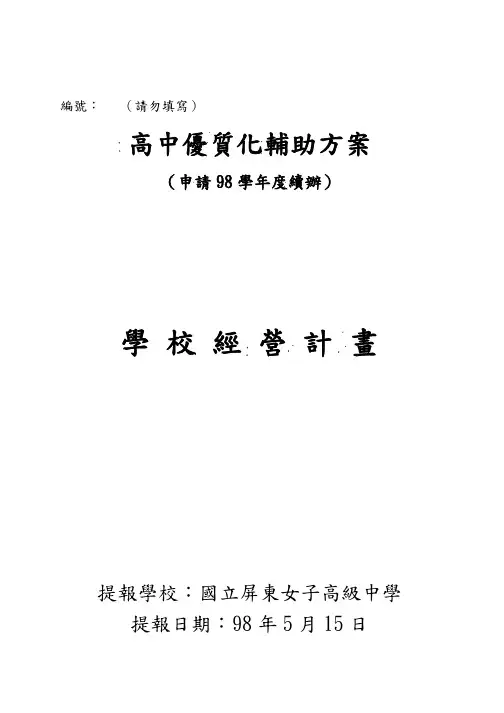
动态心电图检查适应症及注意事项动态心电图检查适应症及注意事项郑州大学第二附属医院心电图科作者:李中健动态心电图:通过给受检者随身携带一个记录仪,在常态情况下长时间(24-72小时)监测体表心电变化的心电图。
包括:3通道、12通道系统,特别是12通道动态心电图在临床上显示了巨大优越性。
成为诊断心肌缺血、心律失常、分析起搏心电图最有用的无创性检查方法。
1 特点1.1 无创伤性,对人体无害,为绿色检查,常态情况下长时间连续纪录,获取信息量大,病变发现率高。
1.2 主要功能:心律失常分析、心肌缺血分析、起搏心电图分析。
1.3 附加功能:心率变异性分析、窦性心率震荡检查、呼吸睡眠监测、其它(T波电交替、QT间期离散度)。
2 适应症参考1998年中国《动态心电图工作指南》、1999年美国心脏病学会(ACC)和美国心脏协会(AHA)制定的《动态心电图指南》、2001年ACC / AHA/美国内科医师学会-美国内科学会工作组制定和发表的《心电图和动态心电图的临床能力声明》,总结动态心电图适应症如下:美国心脏病学会和美国心脏协会制定的《动态心电图指南》标准在特定的临床情况下,动态心电图技术的有用性和有效性按以下分类表示:Ⅰ类:有证据表明和/或一般认为某种诊断方法或治疗措施是有用和有效的。
Ⅱ类:对某种诊断方法或治疗措施的有用和有效性的证据有矛盾和专家观点有分歧。
Ⅱa类:证据/观点支持有用/有效。
Ⅱb类:证据/观点不能充分证明有用/有效。
Ⅲ类:有证据表明和/或一般认为某种诊断方法或治疗措施无效,而且在某些病例中可能有害。
2.1 心律失常(1)有心律失常相关症状Ⅰ类①发生无法解释的晕厥、先兆晕厥或原因不明头晕的患者。
②反复发生无法解释心悸的患者。
Ⅱb类①发生不能用其他原因解释的气短、胸痛或乏力的患者。
②疑一过性房颤或房扑时发生神经系统事件的患者。
③患者出现晕厥、先兆晕厥、头晕或心悸等症状,已鉴别出其原因并非心律失常,但治疗这种病因后症状仍持续存在者。
附件:《海船船员培训大纲》(2016年版)一、海船船员培训大纲(驾驶&通讯)1.适用对象:3000总吨及以上船长适任要求理论知识与要求实践技能与要求评价标准课时理论实操职能1 :航行(管理级)1.1制订航次计划并引导航行通过可接受的标绘远洋航线的方法制订航次计划和各种条件下的航行,并考虑:.1 受限水域.2 气象条件.3 冰况.4 能见度不良.5 分道通航制.6 船舶交通管理(VTS)区域.7 潮汐影响大的区域按照《船舶定线制的一般规定》确定航线按照《船舶报告制的一般原则》和VTS程序进行报告1.1制订航次计划并引导航行.1掌握航次计划概念(1h).2.了解航线设计工作程序.2.1航线审核(1h).2.2航线设计的重要环节(1h).2.3船长对航线风险评估及应对措施(4h).3掌握拟定与执行航次计划时的注意事项(2h).4掌握各种条件下的航行及其监控:. .4.1大洋航线设计及大洋航行 (3h)(对沿海不要求).4.2沿岸航线设计及沿岸航行 (2h).4.3岛礁区航行(2h).4.4狭水道航行方法 (2h).4.5雾中航行方法 (1h).4.6冰区航行方法 (1h).4.7分道通航制区域航行方法(1h).4.8VTS管辖区域的航行方法及报告程序(1h).4.9航行监控(2h). 5掌握《船舶定线制的一般规定》(1h)能在船上(实习)开展以下全部实训;或在实验室(航海模拟器)开展.1、.2、.5、.6各项:.1能根据航次任务审核计划航线(6h).2对具体航次进行风险评估(2h).3能够根据具体的航行任务编制航次计划书(6h).4能制定各种航行条件下对应的航行安全措施,并充分考虑到所在海域的航行条件(4h).5能掌握分道通航制、VTS区域航行规定和船舶报告程序(4h).6熟悉《船舶定线制的一般规定》的主要内容(2h)所设计的航线是安全和经济的;制定的航次计划是有针对性的,采取安全措施是合理正确全面的;各种航行条件下采取航行方法和安全措施是合理的;对《船舶定线制的一般规定》的主要内容理解是正确的26 24适任要求理论知识与要求实践技能与要求评价标准课时理论实操.6掌握《船舶报告制的一般原则》(1h)1.2定位和确定各种定位方法获取的最终船位的精度在各种条件下定位:.1 利用天文观测.2 利用地文观测,包括使用适当的海图、航海通告和其他航海出版物,以判断最终所得船位的精度的能力掌握各种定位方法的特点、局限性、误差源及提高定位精度的方法(8h)能在船上(实习)准确评价船位的精度 (4h)定位方法适合于当时环境和条件;定位要素信息的测量和计算是正确和精确的;确定的船位在可接受的仪器/系统误差限度内;以适当的时间间隔核查从主要定位方法获得的资料的可信性;从海图和航海出版物获取的信息是恰当的,并能正确地解释和正规地应用该信息,准确识别所有潜在的航行危险;所选的海图是适合于航行区域的最大比例尺的,并且海图和航海出版物已按可用的最新资料改正;航海信息的计算和测量是精确的8 4.3 使用现代电子助航仪器,具有其操作原理、局限性、误差源、错误信息的检测和获得准确船位的纠正方法等专门知识.1掌握GPS/DGPS卫星导航系统的工作原理、误差和影响定位精度的信息分析;(2h).2掌握北斗卫星导航系统的工作原理、误差和影响定位精度的信息分析;(2h).1准确评价观测船位的精度(1h).2确定最优船位(1h)使用电子助航设备获得的船位在所用系统的精度标准内,说明影响最终船位精度的可能误差,以及正确应用减少影响最终船位的系统误差的方法4 21.3协调搜寻和救助行动IMO《国际航空和海上搜寻救助手册》中程序的全面知识和应用该程1.3协调搜寻和救助行动.1掌握搜救组织及救助程序(3h).2掌握搜救计划的制定知识(0.5h).3掌握搜寻基点和最可能区域的确定.1能根据遇险性质和外部环境制定正确的搜救协调计划(1h).2能根据有关信息确定搜寻基点,按照正确的搜寻方式进行搜寻,并协制订的协调搜救作业计划符合国际指南和标准;建立无线电通信,并在搜救作业所有阶段遵循正8 4适任要求理论知识与要求实践技能与要求评价标准课时理论实操序的能力方法和程序(1h).4掌握搜寻方式并能根据情况有效应用(1h).5掌握救助落水人员的程序和应急操作与指挥(1h).6掌握作为现场协调员的职责(0.5h).7掌握对外通信联系与协调(1h)调各搜救船舶(1h).3人员落水时能采用正确合理的方式接近落水人员并进行救助(1h).4能与遇险船舶、飞机、各搜救船舶、岸基等进行有效的沟通与协调(1h)确的通信程序1.4确立值班安排和程序关于经修订的《1972年国际海上避碰规则》的内容、应用和意图的全面的知识航行值班中应遵守的基本原则的内容、应用和意图的全面的知识1.4确立值班安排和程序.1掌握《1972年国际海上避碰规则》(14h).2掌握航行值班应遵循的原则(12h).3掌握防止滥用酒精、药物控制的标准和方法(4h).4掌握船员疲劳的原因及预防疲劳的方法.5掌握驾驶台航行值班报警系统(BNWAS )的作用,目的,配置要求,报警方式和工作方式等(2h)实验室训练:.1 能根据MLC和STCW国际公约进行有效的值班安排(5h).2 BNWAS操作(1h)按照有关国际规则和指南制定并保持值班安排和程序,从而保证航行安全,保护海洋环境以及船舶和船上人员的安全32 61.5使用有助于指挥决策的从导航设备和系统获得的信息,以保持航行安全(注:对仅在不要求配备ARPA的船上的工作懂得系统的误差,全面了解导航系统的操作原理依靠仪器引航计划为了作出并实施避碰指挥决策和指挥船舶安全航行,评价从所有来源(包括雷达和自动雷达标绘仪)获取的导航信息1.5航行信息获取与应用.1掌握各种导航设备的特性和局限性;(4h).2掌握各类导航设备误差的分析和处理;(4h).3掌握各类导航设备信息的最佳运用方法。
2014 ACC/AHA非心脏手术患者围术期心血管评估与管理指南近日,美国心脏病学会/美国心脏学会(ACC/AHA)发布了“2014年非心脏手术患者围术期心血管评估与管理指南”,主要内容包括术前危险因素评估、围术期心脏检查、药物(包括麻醉药)管理和监测等。
相关内容同步发表于《美国心脏病学杂志》(J Am Coll Cardiol)和《循环》(Circulation)上。
该指南旨在为行非心脏手术成人患者的围术期心血管评估与管理提供指导,主要内容包括术前危险因素评估、围术期心脏检查、药物(包括麻醉药)管理和监测等,具体包括术前评估危险因素,以指导手术的进行或选择;评估是否需要改变管理方案;明确需要接受长期治疗的心血管疾病和危险因素。
指南关于非心脏手术患者围术期管理建议的改变主要包括治疗、进一步的心血管干预和术后监测。
指南中所提出的每一项建议都标明了明确的证据等级,以便医师了解这一建议在临床诊治过程中的重要性。
指南制定委员会对可利用文献中用于支持每项建议的证据强度进行了评估,并将证据强度分为四个等级:Ⅰ级、Ⅱa级、Ⅱb级和Ⅲ级;对所提建议重要性的等级分为三个水平:A 级、B级和C 级。
指南指出,实现围术期最佳管理的关键是,手术医师、麻醉医师、初级保健提供者、顾问与患者进行有效的沟通。
该指南主要就以下方面提出了具体建议:临床危险因素瓣膜性心脏病1. 对于临床上怀疑为中度或以上瓣膜狭窄或反流的患者,若出现以下情况,应进行超声心动图检查:①既往1年内未进行过超声心动图检查;②与上次评估相比,体格检查或临床状态出现明显改变(Ⅰ/C)。
2. 对于具有进行瓣膜介入治疗(置换术或修复术)适应证的成人患者,根据瓣膜狭窄或反流的症状和程度,在进行择期非心脏手术前进行瓣膜介入治疗,可有效降低围术期风险(Ⅰ/C)。
3. 对于无症状严重主动脉狭窄患者,若进行择期非心脏手术的风险升高,术中和术后进行恰当的血流动力学监测是合理的(Ⅱa/B)。
根据船东及船检意见修改2003/3/281 / 10PAGEWEIGHTSCALE底 图 总 号旧 底 图 总 号DETAIL DESIGNSHIP NO. SHANGHAI MERCHANT SHIPDESIGN & RESEARCHINSTITUTESCHEDULE FOR MOORING TEST AND SEA TRAIL OFHULL PART船体部分系泊及试航试验大纲SDARIDATESIGNCOR. MARKS DATEDESIGNED CHECKEDVERIFIEDAPPROVED CHECKED OF STA.REVISION NO. DESCRIPTIONBYDATE旧底图总号CONTENTI SEA TRIAL OF HULL PART (3)I-1GENERAL (3)I-2T EST C ONDITION AND P LACE (3)I-3P ROGRESSIVE S PEED T RIAL (S EE T ABLE H-1) (3)I-4I NERTIA T EST(O NLY H1008),C RASH S TOP A STERN T EST AND C RASH S TOP A HEAD T EST(O NLY H1008) 4I-5T URNING C IRCLE T EST (O NLY H1008)(S EE T ABLE H-5) (5)I-6Z IGZAG M ANEUVERING T EST (S EE T ABLE H-6) (5)I-7C OURSE K EEPING T EST (S EE T ABLE H-7) (5)I-8S TEERING G EAR T EST (S EE T ABLE H-8) (6)I-9W INDLASS AND A NCHORING T EST (S EE T ABLE H-9) (6)I-10S TRUCTRURE TEST (7)I-11M EASUREMENT OF V IBRATION (S EE T ABLE H-10) (7)I-12N OISE M EASUREMENT (S EE T ABLE H-11) (7)I-13W ILLIAMSON T URN T EST(O NLY H1008) (8)I-14R ESCUE BOAT AND LIFE BOAT LAUNCHING TEST (S EE T ABLE H-12) (8)II SEA TRIAL OF MACHINERY PART (9)II-1.M/E STARTING TEST AND AUXILIARY BLOWER AUTO-STARTING / STOPPING TEST(MOORING TEST IF POSSIBLE) (9)II-2.M/E LOAD TEST AND F.O. CONSUMPTION MEASUREMENT (9)II-3.M/E M.D.O.&H.F.O. CHANGEOVER TEST (10)II-4.M EASUREMENT OF M/E LOWEST STEADY REVOLUTION(S EE T ABLE M-7) (10)II-5.M/E REVERSING TEST(S EE T ABLE M-8) (10)II-6.T EST FOR COMPOSITE BOILER (EXHAUST GAS SECTION)(S EE T ABLE M-9) (10)II-7. F.W. GENERATOR TEST (S EE T ABLE M-10) (11)II-8.S HAFTING TORSIONAL VIBRATION MEASUREMENT (11)II-9.A/E OPERATION TEST BY H.F.O. AND M.D.O.&H.F.O. CHANGEOVER TEST (11)II-10.R EMOTE CONTROL OF M AIN E NGINE TEST. (11)II-11.E NGINE SIDE EMERGENCY MANEUVERING (14)II-12.A UTOMATIC UNMANNED ENGINE ROOM’S FUNCTION TEST (14)II-13. B ALLAST PUMPING TEST TO PROVE PUMPING VAPACITY AND EFFICIENCY DURING TRANFERING BALLAST WATER (15)II-14.O VERHAULING FOR M/E (15)III.SE A TRIALS OF ELECTRIC PART (16)III-1R ADIO &N AVIGATION AND I NTERIOR C OMMUNICATION E QUIPMENT(S EE T ABLE E-1) (16)III-2M AIN P OWER S TATION B LACK-O UT T EST(S EE T ABLE E-2). (17)III-3T HE PUBLIC ADDRESS, GENERAL ALARM & FIRE ALARM SOUND TEST (S EE T ABLE E-3). (17)III-4M.G.P.S T EST(S EE T ABLE E-4) (17)III-5I.C.C.P T EST (S EE T ABLE E-4) (17)III-6I NTERNAL COMMUNICATION SYSTEM(S EE T ABLE E-5) (17)III-7A LL ANGLES OF VISIBILITY FOR SIGNAL AND NAVIGATIONAL LIGHTS AS REQUIRED IN COLREGS ARE TO BE VERIFIED. (17)Ⅲ-8D EAD SHIP START(O NLY H1008)(S EE T ABLE E-6) (18)Ⅲ-9E LECTRIC LOAD MEASUREMENT (SEE T ABLE E-8) (18)底图总号旧底图总号main engine has run at stable outputs before the speed measurement commences. During speed measuring within test section course deviation shall be not more than 2 degrees, steering angle shall be not more than ±5 degrees.(4)Speed-measuring methodThe trial speed is to be measured by DGPS. The output shaft power and revolution of main engine to be measured by torsion meter. The instruments which used in the test should have the certification of verification before speed trials.(5)Measurement recorda.Test time and water depth of every trip.b.Wind velocity and direction, weather condition.c.Ship’s speed, revolutions, power of M/E (rpm) and indicator horsepower of every trip.(6)Ship’s speed calculationShip’s speed at design dra ft (16.5m) to be obtained from the following formula:V TD = V TB * V MD / V MBin the formula:V TD –actual speed at design draft.V TB –actual speed at ballast draft.V MD –model test speed at design draft inV MB –model test speed at ballast draft.I-4 Inertia Test, Crash Stop Astern Test and Crash Stop Ahead Test(1)Inertia Test (Only H1008) (See Table H-2)When ship is going full ahead at normal rpm (86.2 r/min), give an order to stop main engine. When ship’s speed reduces to the speed abt. 5kn the test is finished. During the test the course heading should be kept by changing the rudder angle. Measure and record the distance and time from the order of stop M/E to the ship’s speed reduce to 5kn.(2)Crash stop astern test (See Table H-3)When ship is going full ahead at normal rpm (86.2 r/min), give an order to make main engine run astern (63r/min). When ship’s speed reduces to the speed abt. 0kn the test is finished. During the test keep rudder angle at 0 degree. Measure and record the distance and time from command full astern to the ship’s speed reduce to 0kn.(3)Crash stop ahead test (Only H1008) (See Table H-4)When ship is going astern with 63r/min of main engine, give an order to make main engine run ahead(86.2 r/min). When ship’s speed reduces to the spe ed abt. 0kn, the test is finished. During the test keeprudder angle at 0 degree. Measure and record the distance and time from command full ahead to the ship’s speed reduce to about 0kn.底图总号旧底图总号I-5 Turning Circle Test(Only H1008) (See Table H-5)(1)Test methodWhen the steering gear is in the condition of double pump working, the test should be done at full speed (91r/min), harbor full speed (68r/min)and harbor half speed(55r/min)respectively:a.The rudder angle is turned to hard starboard (35degree) and held until t he ship’s heading anglechanges to 540 degree, the test is finished.b. Resume the straight course until the speed recovery.c. The rudder angle is turned to hard portside (35degree) and held until the ship’s heading anglechanges to 540 degree, the test is finished.d. Resume the straight course until the speed recovery.(2)Measurement record the transfer distance, advance distance, turning diameter and maximum heelingangle.I-6 Zigzag Maneuvering Test (See Table H-6)(1)Test methodWhen the vessel is running ahead (91r/min), the test is to be carried out in accordance with following steps:a.The rudder angle is turned from its zero position to 10︒ starboard and held until the course of thevessel changes to an angle of 10︒ starboard to the original course;b.The rudder angle is turned from 10︒ starboard to 10︒ port and held until the course of the vesselchanges to an angle of 10︒ port to original course;c.The rudder angle is turned from 10︒ port to 10︒ starboard and held until the course of the vesselchanges to an angle of 10︒ starboard to original course:d.The rudder angle is turned from 10︒ starboard to its zero position and held until the vessel runs inoriginal course.(2)Measurement recorda.M/E revolution.b.Initial vessel speed.c.Time of every stage and course angle.I-7 Course Keeping Test (See Table H-7)During sea trail, check the course stability:(1)Keep the steering tiller unchanged while the vessel is sailing full ahead (91r/min) with steering by hand.Record the reading of GYROCOMPASS with the interval of 30 seconds. Measurement will be continued for 3 minutes, one time for fair and counter current respectively.(2)The vessel is sailing full ahead (91r/min) and to be ensured to keep the course. Measure the times ofsteering for keeping the course and the max. Rudder angle. Measurement will be continued for 3 minutes, one time for fair and counter current respectively.底图总号旧底图总号I-8 Steering Gear Test (See Table H-8)(1)Main engine is controlled in wheelhouse, and maneuver handle to be put in the position of ahead andfull speed (91r/min). Steering test to be done in wheelhouse. Operate the hydraulic pump No.1 or No.2 respectively, do the test by putting the rudder angle from 0︒to 35︒starboard/from 35︒starboard to 35︒port/form 35︒port to 0︒/from 0︒to 35︒port/from 35︒port to35︒starboard/from 35︒starboard to 0︒. Measure ship’s heeling angle. The time required to put the rudder from 35︒of one side to 30︒of another side shall not exceed 28 second.(2)Main engine to be put on the status of ahead and full speed, running two hydraulic pumps, test thecapability of putting the rudder from 0︒to 35︒starboard/from 35︒starboard to 35︒port/form 35︒port to 35︒starboard/ from 35︒starboard to 0︒.Following data to be recordeda.Weather, sea condition.b.Time required for each moving rudder.c.Maximum oil pressure in hydraulic cylindersd.Maximum current of motor.(3)Emergency steering gear testTo test the emergency steering effectiveness in stee ring gear room with ship’s running at half speed (M/E abt 76r/min) but not less than 7Kn.By turning the pump control handle make the rudder angle changed from 0︒ - 15︒ starboard - 15︒ port - 0︒one time. Measure the time of steering from 15︒ starboard to 15︒ port. It should not exceed 60 second.(4)Auto pilot effectiveness testDuring the main engine endurance test, do the test with No.1&No2 steering system respectively.--NFU (manual) steering--HAND (following) steering--AUTO (automatic) steeringSet up a heading course, navigate with auto pilot, and observe the keeping course capacity with course recorder. Then do the test of changing heading course.I-9 Windlass and Anchoring Test (See Table H-9)(1)An anchor-ground with more than 82.5 meter depth shall be selected under a calm sea condition and thebow in the upwind.(2)Each anchor is to be let go down gradually to the surface of the water.(3)Five shots of chains of one side anchor is to be let go down freely. During this process manually brake.Check the reliability of the brake system.(4)One side anchor is to be hoisted. During hoisting process, average speed of hoisting anchor to bemeasured and recorded. (by measuring No.2 and No.3 shot of chain ) , The average speed is not less than 9m/min. Then hoist the anchor up to bell mouth with windlass.底图总号旧底图总号2.3.2 The report on chemical analysis and low calorific value to be submitted before this test.2.3.3 The ship should go straightly as possible during the F.O. consumption measurement.2.3.4 The measured F.O. consumption should be corrected according to the actual calorificvalue and ambient conditions, then be offered to owner for reference. (See Table M-6)2.4 M/E shaft power to be measured when F.O. consumption is measuring.II-3.M/E M.D.O. & H.F.O. changeover testM/E M.D.O. & H.F.O. changeover test to be executed as follows:M.D.O. --- H.F.O.(before M/E operating test for adjustment)H.F.O. --- M.D.O.(after M/E load test)II-4.Measurement of M/E lowest steady revolution(See Table M-7)M/E is adjusted to the lowest steady revolution by reducing revolution progressively atwhich the engine keep running for 5 minutes. Record the revolution of M/E andturbocharger, the graduation of the maneuvering handle and M/E fuel oil pump.Turnrudder angle to hard portside (35degree), observe change of the course.II-5.M/E reversing test(See Table M-8)M/E reversing test should be carried out while the engine running at the lowest steadyrevolution. The time for reversing should not be more than 15 seconds. The testincluding ‘ ahead –astern’ and ‘astern –ahead’ is not less than 3 times.II-6.Test for composite boiler (exhaust gas section) (See Table M-9)6.1 During M/E load test at NCR, the measurement of the evaporation of the compositeboiler (exhaust air section) to be conducted for one hour by flowmeter arranged at thedelivery side of the feed water pump. During evaporation test, composite boiler(oil-fired section) should not operate and the feed water to be kept stable.6.2 The soot blower of boiler to be tested.6.3 the safety valve popping test: Opening pressure of safety valve: 0.8 MPa6.4 Pressure accumulation test(The items tested at the mooring test stage will not be triedagain)The boiler pressure is not to rise more than 0.954 Mpa (6% above the maximum allowable working pressure) when the steam stop valve is closed under full firing condition for duration of 15 minutes. During this test no more feed water is to be supplied than that necessary to maintain a safe working water level.底图总号旧底图总号II-7.F.W. generator test (See Table M-10)7.1 During M/E NCR condition, F.W. generator to be running for one hour utilizing thewaste heat in the jacket cooling fresh water from M/E. Record the parameters asfollows:a)Vacuum and temperature of evaporation chamberb)Temperatures of cooling fresh water inlet and outletc)Temperatures of sea water inlet and outletd)Salinity in the distilled watere)Capacity(not less than 25 m3/24h,at NCR)f)Delivery pressure of sea water ejector pumpg)Delivery pressure of ejector7.2 In condition of voyage at low speed, F.W. generator to be running for function test withsteam(if some F.W. in outlet the test finished ).II-8.Shafting torsional vibration measurementThe test to be carried out from M/E lowest steady revolution to 91.0 r/min at intervals of5 r/min, and from 91.0 r/min to M/E lowest steady revolution at intervals of 5 r/min.Example: lowest steady revolution→30→35→40→45→55→60→65→70→75→80→85→91 r/min→lowest steady revolution。